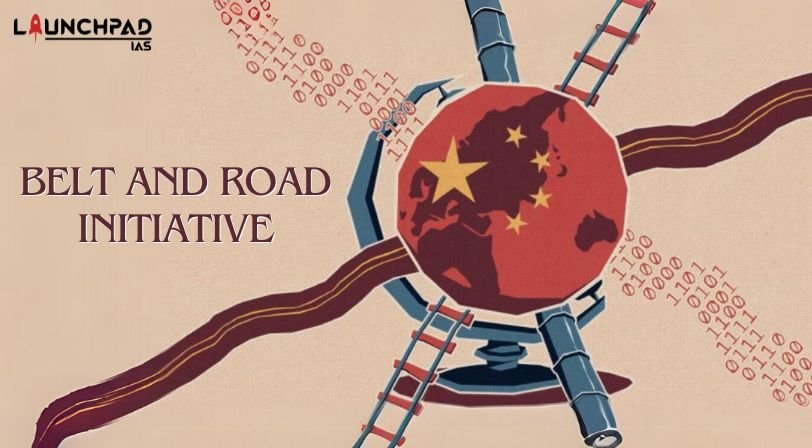What is BRI?
- ‘Belt’ Plan– President Xi Jinping announced the Silk Road Economic ‘Belt’ during his visits to Kazakhstan in 2013.
- It was to revitalize a series of trading and infrastructure routes between Asia and Europe.
- Connectivity through Central Asia was a key element of the initiative.
- ‘Road’ Plan – A sea trade infrastructure called ‘Road’ was announced to connect China with Southeast Asia, Europe and Africa.
- The major focus has been to build ports, bridges, industry corridors, etc. throughout Southeast Asia and the Indian Ocean.
- Together, these initiatives were referred to as the One Belt One Road Initiative (OBOR).
- Aim of BRI – China wanted to
- Resolve capital surplus and industrial overcapacity
- Increase its political influence in broader regions
- Corridors – The initiative includes 6 international corridors.

- Principles of BRI
- Policy coordination
- Infrastructure connectivity
- Trade
- Financial integration
- People-to-people connections
- Industrial cooperation
- Main channels for BRI financing – China-headquartered Asian Infrastructure Investment Bank (AIIB) and Silk Road Fund (SRF)
- BRI Forums – China has hosted 3 BRI Forums in 2017, 2019, and 2023.
What are the criticisms against BRI?
- Funding – With China’s slowing economic growth, the volume of projects and the amount of money going into the BRI have stagnated.
- Italy’s case – Italy’s possible departure from the BRI will be a symbolic setback as it was the only G7 country that had formally joined the initiative.
- Debt crisis – The economic non-viability of many projects is questioned as it has led to “debt trap” situations in countries like Sri Lanka. Malaysia canceled $22 billion worth of BRI projects, citing inflated prices.
- Nature of contracts– The inflexible nature of BRI contracts, where credit is extended at close to market rates, and debt cancellation or restructuring rarely included, has been a major impediment.
- Transparency – The lack of transparency regarding the financing raises questions about the long-term implications of BRI.
- India’s view– India opposes this project as China Pakistan Economic Corridor (CPEC) passes through Pakistan-occupied Kashmir, infringing on India’s sovereignty and territorial integrity.
- De-risking – European nations are trying to reduce their dependence on China amid a Western push to de-risk supply chains, alongside growing geopolitical tensions with Beijing.
Implications for India:
- CPEC will provide China with strategic access to the Arabian Sea and enhance its presence in the region. It would enable China to wield much more powerful influence in the Indian Ocean.
- Once completed, the CPEC project would mean that the Chinese presence in the entire Pakistan including Pakistan-Occupied Kashmir becomes pervasive and powerful.
- The route of CPEC passes through POK and makes China an indirect stakeholder in the Kashmir conflict between India and Pakistan.
Related Links: Shanghai Cooperation Organisation (SCO)


